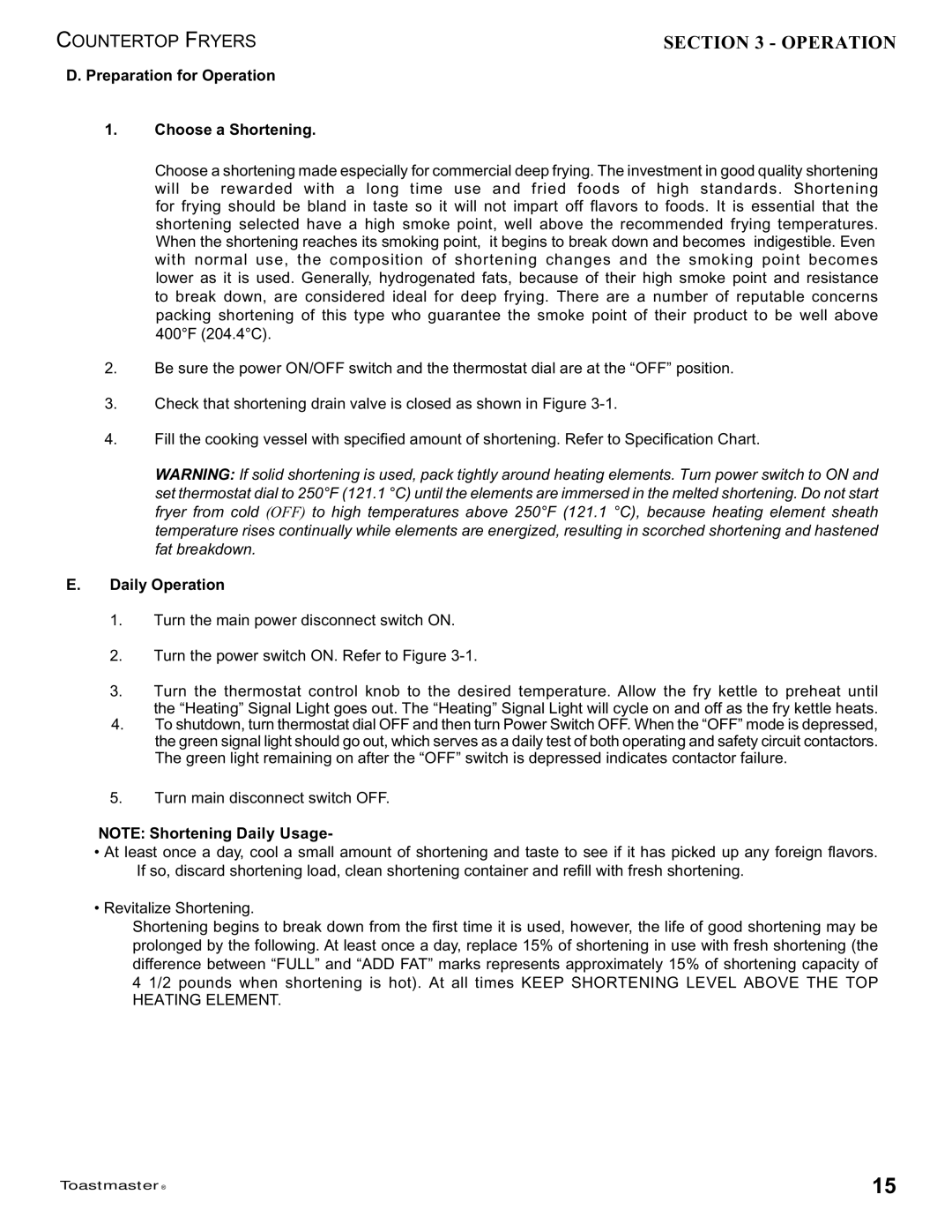1439, 1427 specifications
Toastmaster 1427 and 1439 are two prominent models in the line of countertop toaster ovens that cater to the diverse needs of home cooks. Both models are known for their efficient performance, user-friendly designs, and innovative features that enhance the cooking experience.The Toastmaster 1427 is designed with a sleek and compact appearance, making it an ideal option for kitchens with limited counter space. This toaster oven boasts a spacious interior that can accommodate a whole chicken or multiple slices of bread, offering versatility for various cooking tasks. The 1427 is equipped with multiple cooking functions, such as baking, broiling, and toasting, providing users with a range of options to prepare their favorite meals. Its adjustable temperature control allows for precise cooking, ensuring that food is cooked evenly and thoroughly. Additionally, the built-in timer and automatic shut-off feature provide an extra layer of safety, preventing overcooking or burning.
On the other hand, the Toastmaster 1439 takes versatility to the next level with its convection cooking technology. This feature circulates hot air within the oven, allowing for faster and more even cooking. The 1439 model also includes multiple rack positions and a removable crumb tray for easy cleaning, enhancing user convenience. The design incorporates easy-to-use dials that allow for straightforward operation, making it accessible for cooks of all skill levels.
Both models come with an array of thoughtful characteristics, such as non-stick interiors and durable construction. The exterior is often made from sturdy materials that are resistant to wear and tear, ensuring the longevity of the appliance. Furthermore, they are energy efficient, using less power compared to traditional ovens, which is both eco-friendly and cost-effective.
In summary, Toastmaster 1427 and 1439 are exceptional toaster ovens that provide a blend of functionality, style, and safety features. Whether preparing a simple breakfast or a complex dinner, these ovens are designed to meet the needs of modern kitchens, making them valuable additions to any cooking space. With their innovative technologies and user-centric design, they empower users to cook confidently and creatively.
